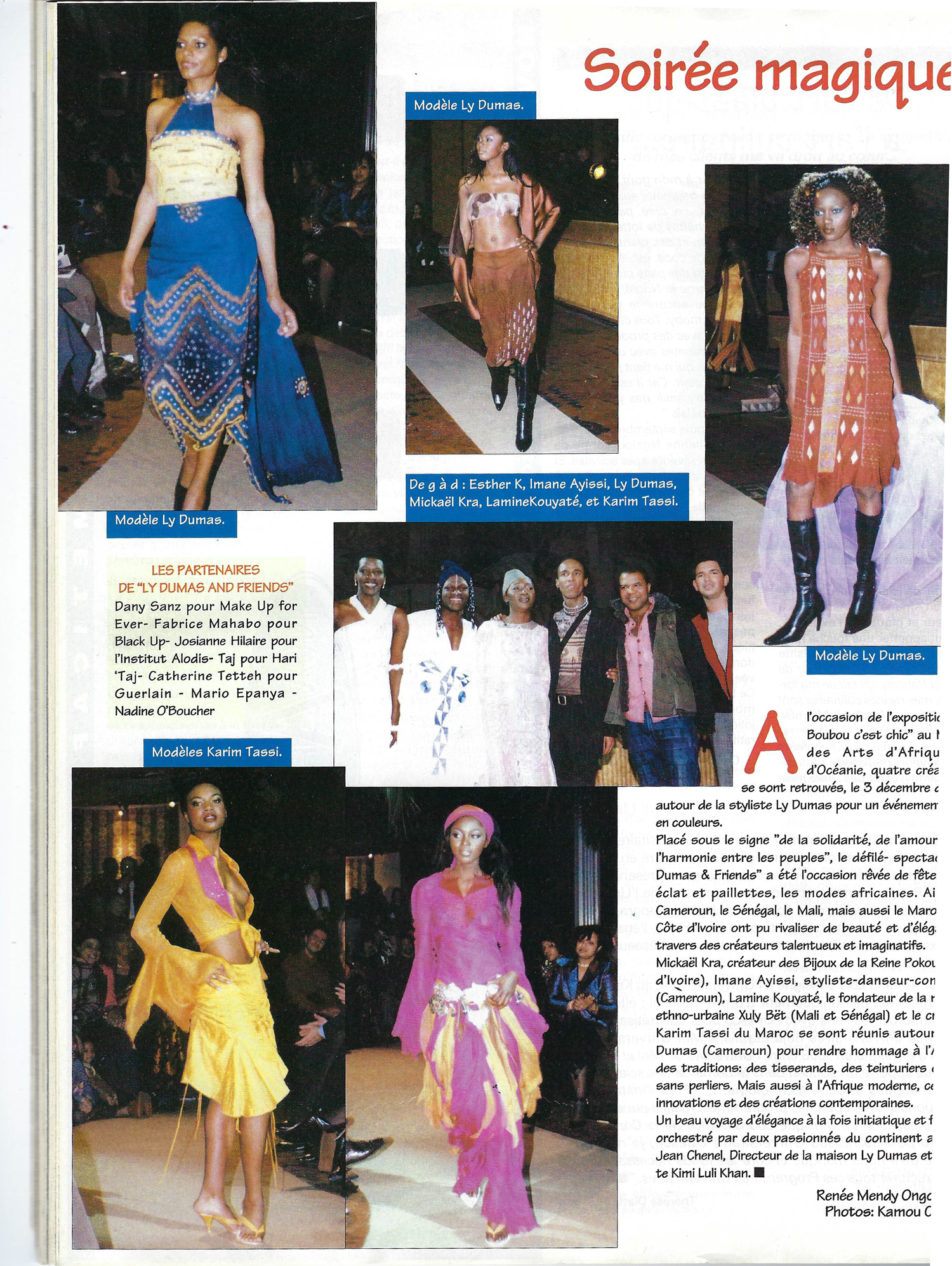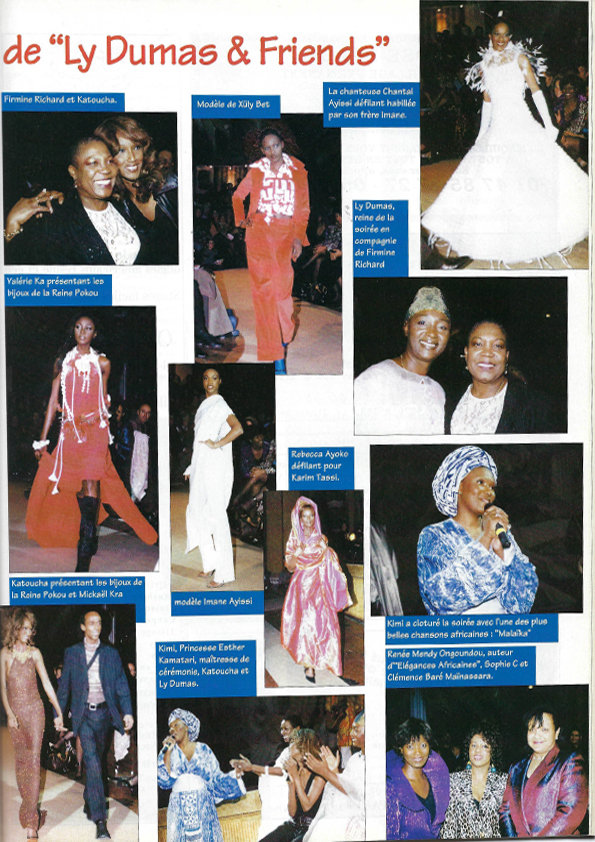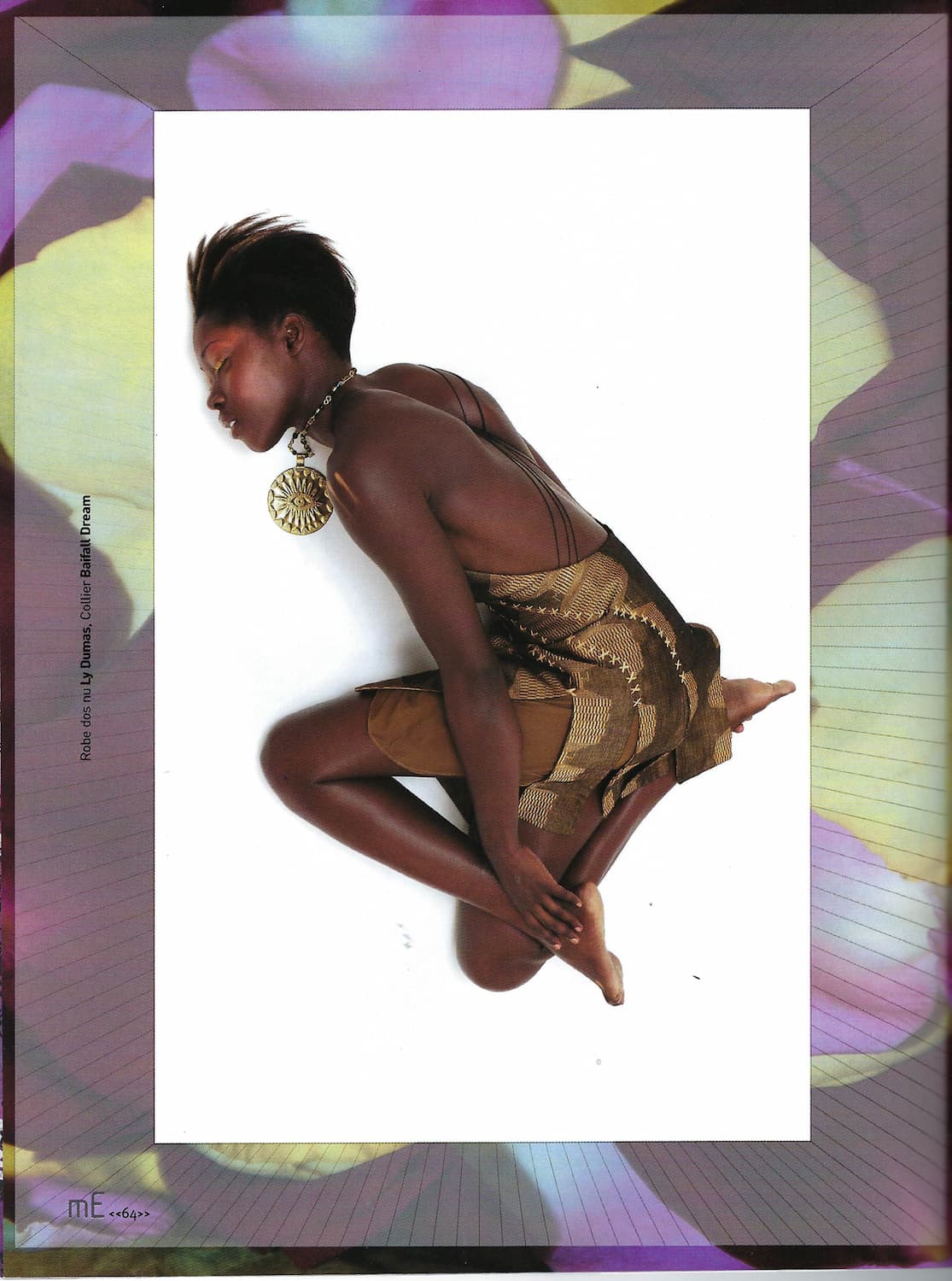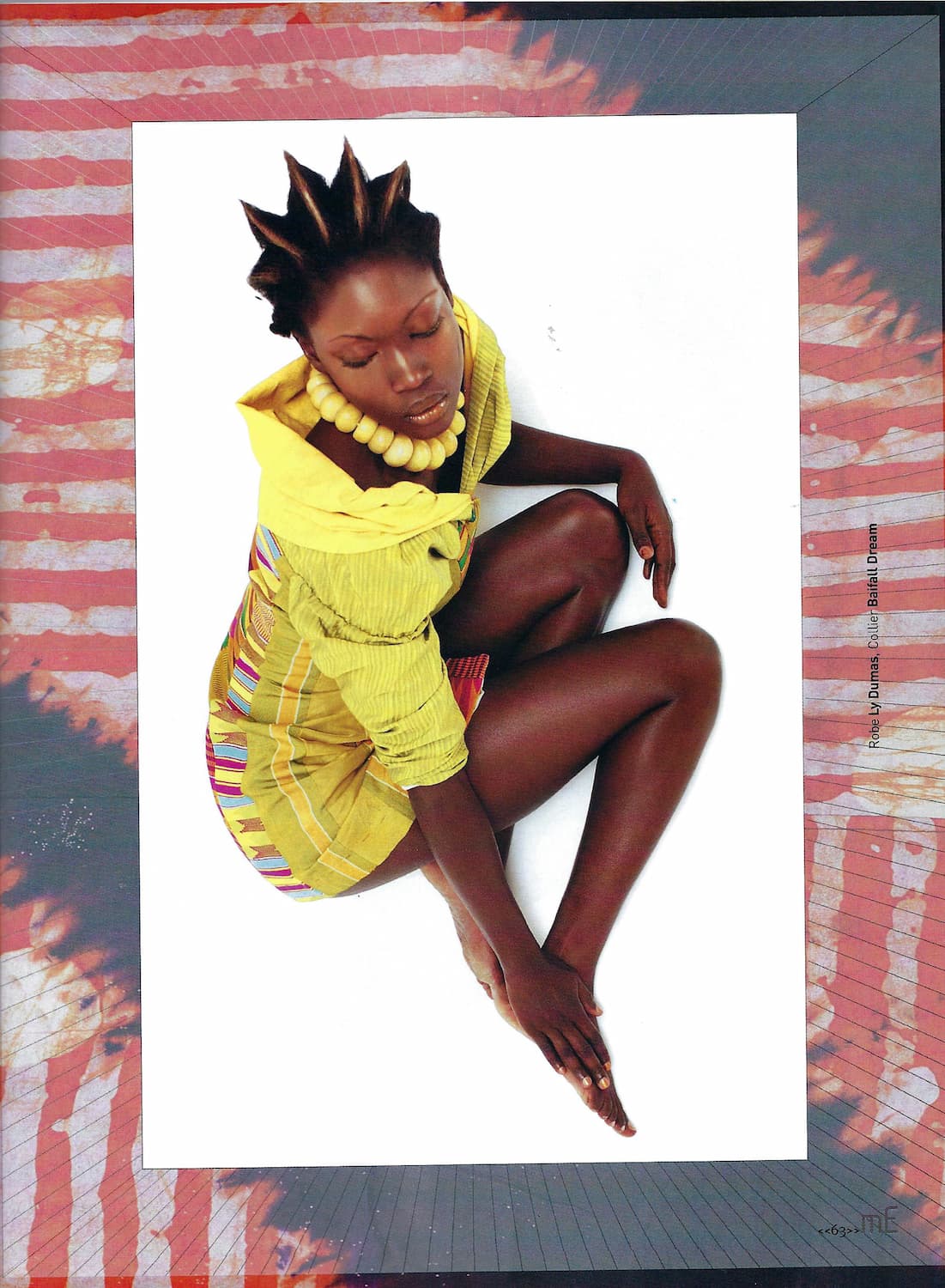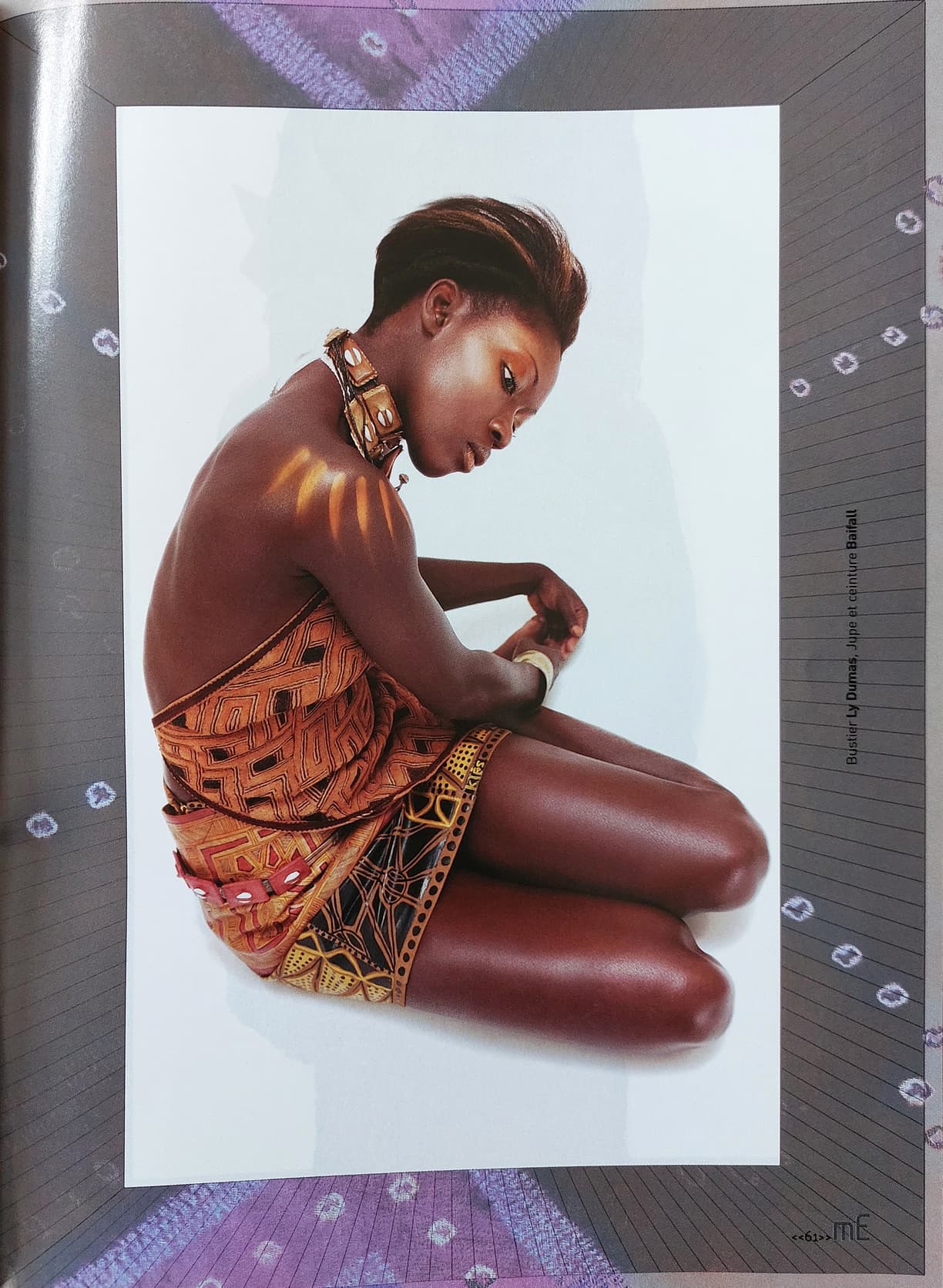Press: 2002-2003
2002
‘Le Boubou, c’est Chic’ was the last exhibition to be held at the Musée des Arts d'Afrique et d'Océanie (MAAO). Before permanently closing its doors and moving its collections to the Musée du Quai Branly, the MAAO wanted to organise a prestigious event around African culture. Curator Hélène Joubert entrusted the task to Ly Dumas, who made the evening a resounding success. She imagined ‘Ly Dumas & Friends’ to parade with the accomplished African fashion designers, friends and accomplices Mickael Kra, Xüly Bet, Karim Tassi and Imane Ayissi. Ly decorated the venue with her fabrics. Her beaded creations adorned the showcases. Her designs dazzled us, especially the ones worn by Katoucha Niane and Kimi Khan.
The event received media coverage the following year. From a cultural point of view, it represented a further consecration of Ly Dumas as an ambassador for Africa in France and around the world.
2003 - AFRICULTURES.com
Ly Dumas & Friends: fashion show at the Musée National des Arts d’Afrique et d’Océanie, by Maureen Murphy, online 23 January 2003.
With just a few weeks to go before it closes, the Musée des Arts d’Afrique et d’Océanie, once the Musée des Colonies (the only remnant of the 1931 colonial exhibition), has opened its doors one last time to contemporary African art.
Conceived by Hélène Joubert (curator in charge of the fashion show and exhibition) as an ‘extension’ of the “Boubous c’est Chic” exhibition, the fashion show on 3rd December 2002 brought together designers Ly Dumas (from Cameroon), Mickaël Kra (from Côte d’Ivoire), Xuly Bët (Lamine Kouyaté from Senegal and Mali), Karim Tassi (from Morocco) and Imane Ayissi (also from Cameroon) — an invitation to dream for a prestigious evening.
The photos show the creations of Ly Dumas.
[…]
First up are the Queen’s attendants, dressed in sumptuous boubous designed by Ly Dumas, especially for the event. Every traditional detail of the garment was reviewed, interpreted and surpassed. The back cleavage became a deep indentation down the spine. From a collar that reveals the shoulder, we move on to an asymmetrical cut. In contrast to the long, modest loincloth, Ly Dumas dared to go short, revealing the legs, boots and purple fabric. (…) The dreaminess and sensuality of Ly Dumas’ evening gowns and festive wear. Beads, fabrics (Bogolan, Rabal, Ndop, etc). African inspiration is always present.
Showing the love, joy and beauty of Africa
Extract from Maureen Murphy's interview with Ly Dumas, 23rd January 2003, AFRICULTURES
What does it mean to you to show your work in a museum, and this museum in particular?
I’ve already done a fashion show at the Musée Dapper. You can understand my desire not to see African objects as static. African objects are not static. Every time I come, I want to move them. I love life, and everything has to be alive.
As far as this museum is concerned, I think it’s a love affair. When I’m in this hall (the Salle des Fêtes), I feel at home, well, not exactly, but it feels like Africa. This museum brings together everything African, for instance, the art objects. When I see these museum columns, I think of the carved wooden pillars we made back home.
How do you situate your show in relation to the boubous exhibition? Is there a link between traditional weaving and your creation?
There wasn’t any connection except for the embroidery. I do bead embroidery and have created a collection dedicated to the ‘boubou’.
Ly Dumas, the textile designer, by Danielle Nomba.
Ndop fabric and pearls from West Cameroon, Bogolan from Mali, Rabal from Senegal and other textiles from Côte d’Ivoire, Congo and Madagascar are all available from Ly Dumas in charming, form-fitting evening dresses with side or waist slits, embroidered or combined with satin, chiffon or silk. What’s more, she gives a special place to the symbolism of the fabrics, their cultural value and even the message they convey. She aims to share the cultural richness of African textiles with the whole world. In December 2002, she organised a fashion show with other African designers at the Musée des Arts d’Afrique et d’Océanie in Paris.
For the past decade, Ly Dumas has been dressing some of the world’s most prominent women. From diplomats to showbiz celebrities, from first ladies to the singer Dee Dee Bridgewater, Ly Dumas has a cultural goal firmly rooted in African society. Weavers, embroiderers and beadworkers. She wants to perpetuate this age-old art by encouraging the elders to pass on their skills to the young. So that another facet of African culture survives: that of fabric as a cultural vehicle.
